Books by Tolga Islam

Soylulaştırma, genel olarak orta ve üst-orta sınıfların kent içinde dar gelirli ve yoksul kesimle... more Soylulaştırma, genel olarak orta ve üst-orta sınıfların kent içinde dar gelirli ve yoksul kesimlerin yaşamakta olduğu köhneleşmeye yüz tutmuş tarihi konut alanlarına yerleşmelerini ve buraları yenileyerek kendi yaşam standartlarına uygun hale getirmelerini içeren bir süreç. Soylulaştırmanın görüldüğü mahallelerin nüfus kompozisyonlarında ve fiziksel yapılarında önemli dönüşümler yaşanıyor. İstanbul’un Kuzguncuk, Cihangir, Asmalımescit, Ortaköy, Galata ve Balat gibi semtlerinde yaşanan dönüşümlerin olumlu ve olumsuz yönlerini emlâk piyasasından mimarî özelliklere, sosyal örgütlenmeden kent planlamaya, yerinden edilen mahalle sakinlerinden, “bohem burjuvalara” kadar uzanan geniş bir çerçevede ele almasının yanında, elinizdeki kitap bu dönüşümün dinamiklerini tespit etmeye çalışıyor.
Yazarlar
Rifat Bali – David Behar – Dilek Erden – Nilgün Ergün – Pelin Gökçür – Aynur İlyasoğlu – Ayça İnce - Tolga İslam – Aykut Kahraman – Amy Mills – Nilüfer Narli – Jean Francois Perouse – Ebru Soytemel – Nil Uzun – Nuran Yavuz
Tartışmacılar
Behiç Ak, Cengiz Bektaş, Besim Çeçener, Korhan Gümüş, Güzin Kaya, Aykut Köksal, Nuray Mert, Nora Şeni
Papers by Tolga Islam
Taylor & Francis eBooks, Feb 16, 2010
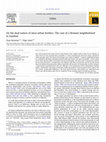
Cities, 2012
This essay questions the nature of intra-urban borders from a politico-ethical point of view. Nam... more This essay questions the nature of intra-urban borders from a politico-ethical point of view. Namely: to what extent are intra-urban borders acceptable at a time of proliferating discourses about a borderless world, and open cities? We discuss this through a case study of Sulukule-a historic neighborhood home to a millennium old Roma community located within the historic city center of Istanbul-in the context of the urban renewal project launched by the local municipality. The often cited ''humanitarian'' pretext for the renewal project is ''incorporating'' the Sulukule's poor Roma community into the city and tearing down the borders demarcating their ghetto. Eventually, this discourse of incorporation served to instigate a rapid episode of gentrification in the area. Offering a critical perspective on the municipality's renewal project, and through a discussion of the often conflicting premises of the discourses of the ''right to the city'' and the ''group right to difference,'' this essay argues that intra-urban borders are ''undecided'' separators and calls for policy tools that are responsive to the enabling aspects of bordering processes.
PLANLAMA, 2017
The effects of studentification on neighborhoods are similar to those of the traditional gentrifi... more The effects of studentification on neighborhoods are similar to those of the traditional gentrification processes: The concentration of students in a certain locality increases housing prices and transforms the socio-cultural base of the neighborhood in accordance with the preferences and needs of newcomers (university students). The neighborhood pattern Anahtar sözcükler: Ayrışma; dolaylı yerinden edilme; öğrencileştirme; öğrenci mahallesi soylulaştırma.
Routledge, London/New York, 2005
He has maintained a strong interest in gentrification since completing his doctorate on gentrific... more He has maintained a strong interest in gentrification since completing his doctorate on gentrification and displacement in Greater London. He has written on issues relating to urban public space, neighbourhood change, social inequalities and affluent spaces. Matthias Bernt studied Political Sciences at Freie Universität of Berlin and wrote his dissertation on the changing urban renewal politics of Berlin. Since 2001 he has worked as a Researcher in the Department for Urban and Environmental Sociology at the UFZ-Centre for Environmental Research Leipzig-Halle. His main fields of interest are governance and urban renewal. He has been active in tenants' organizations and neighbourhood initiatives in East Berlin for several years.
Journal of Planning, 2017
The effects of studentification on neighborhoods are similar to those of the traditional gentrifi... more The effects of studentification on neighborhoods are similar to those of the traditional gentrification processes: The concentration of students in a certain locality increases housing prices and transforms the socio-cultural base of the neighborhood in accordance with the preferences and needs of newcomers (university students). The neighborhood pattern Anahtar sözcükler: Ayrışma; dolaylı yerinden edilme; öğrencileştirme; öğrenci mahallesi soylulaştırma.

Planning Theory & Practice, 2011
In its Global Report on Human Settlements in 2009, UN-Habitat placed the challenge, and much of t... more In its Global Report on Human Settlements in 2009, UN-Habitat placed the challenge, and much of the cause, of the world's one billion urban dwellers who live in squatter settlements (32% of the global urban population) squarely at the feet of a failing planning approach. It finds: Planning is still weak in terms of how to deal with the major sustainable urban challenges of the twenty-first century: climate change, resource depletion, rapid urbanization, poverty and informality. (UN-Habitat 2009, xxiv) Informality is firmly cast as not only one of the key problems facing cities and urban dwellers, but also one of the major challenges to both long-standing and contemporary approaches to planning. This Interface explores this critical issue of informality, by addressing it, as Roy (2005) suggests as a particular mode of urbanisation in contemporary human settlements. Different manifestations, from different contexts around the world, of that informal mode of urban life are explored to ask what they mean for contemporary planning practice and theory. It asks: if informality is a mode of urbanisation, then what does it look like in its locally situated manifestations? What modes of planning are being mobilised in response? What are the practical dilemmas for planning? How can they be resolved? Informality is associated with modes of human settlement and trade or exchange that occur outside of formal legal structures and processes. In urban settlement terms, it is most often studied in the context of slum development on squatted lands on the periphery of rapidly growing cities. In economic terms, it is most often related to street vendors, labour migration and illegally employed and exploited workers-phenomena that are increasingly global in scope. In a footnote, Alsayyad (2004) notes that the term "urban informality" was first employed in Spanish by Juan Pablo Pérez Sáinz in 1989, but that the notion of the informal sector in relation to labour migration to cities was being analysed earlier than that, in the late 1960s. There are various ways, then, that we might define informality, and there is unsurprisingly considerable debate about such definitions. To that end, I find Roy's comment in her dialogic introductory exchange (Alsayyad & Roy 2004, p. 5) insightful:
Uneven development and displacement, 2015
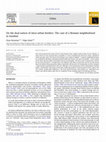
Cities, 29 (2012) 234–243
This essay questions the nature of intra-urban borders from a politico-ethical point of view. Nam... more This essay questions the nature of intra-urban borders from a politico-ethical point of view. Namely: to what extent are intra-urban borders acceptable at a time of proliferating discourses about a borderless world, and open cities? We discuss this through a case study of Sulukule – a historic neighborhood home
to a millennium old Roma community located within the historic city center of Istanbul – in the context of the urban renewal project launched by the local municipality. The often cited ‘‘humanitarian’’ pretext for the renewal project is ‘‘incorporating’’ the Sulukule’s poor Roma community into the city and tearing
down the borders demarcating their ghetto. Eventually, this discourse of incorporation served to instigate a rapid episode of gentrification in the area. Offering a critical perspective on the municipality’s renewal project, and through a discussion of the often conflicting premises of the discourses of the ‘‘right to the
city’’ and the ‘‘group right to difference,’’ this essay argues that intra-urban borders are ‘‘undecided’’ separators and calls for policy tools that are responsive to the enabling aspects of bordering processes
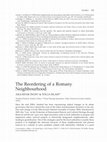
Planning Theory and Practice (Interface) 12(1), p. 125-131. , 2011
Since the mid 2000s, Istanbul has been experiencing radical changes in its urban governance that ... more Since the mid 2000s, Istanbul has been experiencing radical changes in its urban governance that have altered the roots of the urban transformation dynamics in the city. One such change is Code 5366 (Grand National Assembly of Turkey, 2005). Introduced in 2005, this “Law on the Protection of Deteriorated Historic and Cultural Heritage through Renewal and Re-use” gave new legal and policy tools to local authorities to prepare and
implement urban renewal projects in historically designated neighbourhoods, often leading to gentrification. One of the strategies used by the local authorities to justify these projects is to highlight the informal character of these neighbourhoods and present renewal as a remedy to solve problems related with informality. Sulukule is a good example in this regard, as the first area subject to urban renewal under Code 5366, and this is where we focus in this paper.
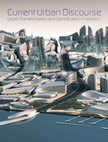
"In the mid-2000s, unprecedented economic growth provided a catalyst for Istanbul's transformatio... more "In the mid-2000s, unprecedented economic growth provided a catalyst for Istanbul's transformation. Tolga İslam outlines the background to large-scale urban development and renewal projects that have been undertaken by local authorities throughout the city. Copyright © 2010 John Wiley & Sons, Ltd.
Keywords:
Zaha Hadid Architects, Masterplan for Kartal, Istanbul, 2006;Tabanlıoğlu Architects, Galataport project, Istanbul, 2001;continuous economic growth;investments in the transportation infrastructure;undersea tunnel;new shopping malls;gated housing communities;new housing on state-owned land;Mass Housing Administration (TOKİ);recreational centre in Küçükçekmece;Massimilliano Fuksas, Kisho Kurakawa;Ken Yeang;Kengo Kuma;MVRDV;strategy to promote Istanbul;Haydarpaflaport;mixed-use areas;add value to the city;Başibüyük;Justice and Development Party (Adalet ve Kalkınma Partisi -AKP);‘Law on the Protection of Deteriorated Historic and Cultural Heritage through Renewal and Re-use’;Tarlabaşı and Sulukule;high crime rates;public-private ownership"
Unpublished MA Thesis, İstanbul, Yıldız Teknik …, Jan 1, 2003
Conference Papers by Tolga Islam
a conference of Upward Neighborhood Trajectories: …, Jan 1, 2002
1 Implications of an Urban Renewal Based State-Led Gentrification Process in a Roma Neighborhood ... more 1 Implications of an Urban Renewal Based State-Led Gentrification Process in a Roma Neighborhood in Istanbul1 Tolga İslam ... 1. Changing Context of Urban Renewal in Istanbul - Urban Renewal Project in Sulukule 2. Discourse analysis goals of the Fatih municipality. ...


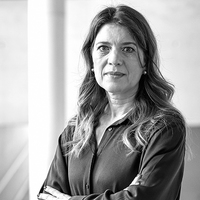


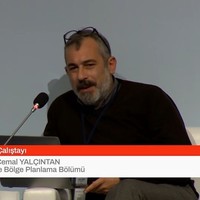




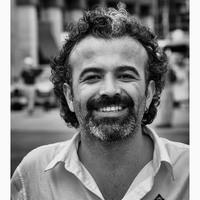
Uploads
Books by Tolga Islam
Yazarlar
Rifat Bali – David Behar – Dilek Erden – Nilgün Ergün – Pelin Gökçür – Aynur İlyasoğlu – Ayça İnce - Tolga İslam – Aykut Kahraman – Amy Mills – Nilüfer Narli – Jean Francois Perouse – Ebru Soytemel – Nil Uzun – Nuran Yavuz
Tartışmacılar
Behiç Ak, Cengiz Bektaş, Besim Çeçener, Korhan Gümüş, Güzin Kaya, Aykut Köksal, Nuray Mert, Nora Şeni
Papers by Tolga Islam
to a millennium old Roma community located within the historic city center of Istanbul – in the context of the urban renewal project launched by the local municipality. The often cited ‘‘humanitarian’’ pretext for the renewal project is ‘‘incorporating’’ the Sulukule’s poor Roma community into the city and tearing
down the borders demarcating their ghetto. Eventually, this discourse of incorporation served to instigate a rapid episode of gentrification in the area. Offering a critical perspective on the municipality’s renewal project, and through a discussion of the often conflicting premises of the discourses of the ‘‘right to the
city’’ and the ‘‘group right to difference,’’ this essay argues that intra-urban borders are ‘‘undecided’’ separators and calls for policy tools that are responsive to the enabling aspects of bordering processes
implement urban renewal projects in historically designated neighbourhoods, often leading to gentrification. One of the strategies used by the local authorities to justify these projects is to highlight the informal character of these neighbourhoods and present renewal as a remedy to solve problems related with informality. Sulukule is a good example in this regard, as the first area subject to urban renewal under Code 5366, and this is where we focus in this paper.
Keywords:
Zaha Hadid Architects, Masterplan for Kartal, Istanbul, 2006;Tabanlıoğlu Architects, Galataport project, Istanbul, 2001;continuous economic growth;investments in the transportation infrastructure;undersea tunnel;new shopping malls;gated housing communities;new housing on state-owned land;Mass Housing Administration (TOKİ);recreational centre in Küçükçekmece;Massimilliano Fuksas, Kisho Kurakawa;Ken Yeang;Kengo Kuma;MVRDV;strategy to promote Istanbul;Haydarpaflaport;mixed-use areas;add value to the city;Başibüyük;Justice and Development Party (Adalet ve Kalkınma Partisi -AKP);‘Law on the Protection of Deteriorated Historic and Cultural Heritage through Renewal and Re-use’;Tarlabaşı and Sulukule;high crime rates;public-private ownership"
Conference Papers by Tolga Islam
Yazarlar
Rifat Bali – David Behar – Dilek Erden – Nilgün Ergün – Pelin Gökçür – Aynur İlyasoğlu – Ayça İnce - Tolga İslam – Aykut Kahraman – Amy Mills – Nilüfer Narli – Jean Francois Perouse – Ebru Soytemel – Nil Uzun – Nuran Yavuz
Tartışmacılar
Behiç Ak, Cengiz Bektaş, Besim Çeçener, Korhan Gümüş, Güzin Kaya, Aykut Köksal, Nuray Mert, Nora Şeni
to a millennium old Roma community located within the historic city center of Istanbul – in the context of the urban renewal project launched by the local municipality. The often cited ‘‘humanitarian’’ pretext for the renewal project is ‘‘incorporating’’ the Sulukule’s poor Roma community into the city and tearing
down the borders demarcating their ghetto. Eventually, this discourse of incorporation served to instigate a rapid episode of gentrification in the area. Offering a critical perspective on the municipality’s renewal project, and through a discussion of the often conflicting premises of the discourses of the ‘‘right to the
city’’ and the ‘‘group right to difference,’’ this essay argues that intra-urban borders are ‘‘undecided’’ separators and calls for policy tools that are responsive to the enabling aspects of bordering processes
implement urban renewal projects in historically designated neighbourhoods, often leading to gentrification. One of the strategies used by the local authorities to justify these projects is to highlight the informal character of these neighbourhoods and present renewal as a remedy to solve problems related with informality. Sulukule is a good example in this regard, as the first area subject to urban renewal under Code 5366, and this is where we focus in this paper.
Keywords:
Zaha Hadid Architects, Masterplan for Kartal, Istanbul, 2006;Tabanlıoğlu Architects, Galataport project, Istanbul, 2001;continuous economic growth;investments in the transportation infrastructure;undersea tunnel;new shopping malls;gated housing communities;new housing on state-owned land;Mass Housing Administration (TOKİ);recreational centre in Küçükçekmece;Massimilliano Fuksas, Kisho Kurakawa;Ken Yeang;Kengo Kuma;MVRDV;strategy to promote Istanbul;Haydarpaflaport;mixed-use areas;add value to the city;Başibüyük;Justice and Development Party (Adalet ve Kalkınma Partisi -AKP);‘Law on the Protection of Deteriorated Historic and Cultural Heritage through Renewal and Re-use’;Tarlabaşı and Sulukule;high crime rates;public-private ownership"